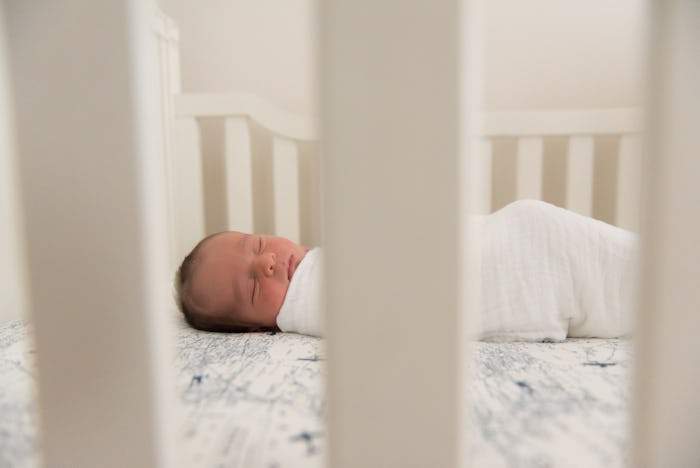There are very few absolutes when it comes to raising babies, but swaddling is a term every parent has heard at some point. It's one of the things they teach you to do at the hospital and, if you're like me, it takes another week or two home with your baby to figure out how to turn them into the world's cutest burrito. It's so much more than just wrapping a blanket around your little one and knowing the safe and unsafe ways to swaddle your baby is incredibly important.
Holding your baby after you've just given birth is magical, but once they're all cleaned up and handed back to you, you probably notice that pink and blue blanket swaddled tightly around them. According to The Baby Sleep Site, swaddling has been recommended as a way to calm fussy babies and promotes longer sleep in both naps and bedtime.
But earlier this year, parents around the world panicked when an article in Pediatrics connected swaddling with an increased risk for SIDS. It's a pretty sensational comparison and CNN broke down the study — the issue is when children are swaddled and then roll onto their stomach or sides, which goes against the American Academy of Pediatrics sleep guidelines. When your child can't move their arms to push themselves up off the mattress or to roll back, there could be an issue. The article on swaddling also touched base on the age limits of swaddling. Namely, after a certain point, your child may be too old to be safely swaddled.
So do you give up the magic swaddle? I'll be honest — my child and I both relied on the swaddle, so giving it up was no easy task. Instead, we focused on safe swaddling practices.
According to Healthy Children, the website from the American Academy of Pediatrics, swaddling is safe as long as your baby is on their back, that the swaddle is not so tight that they find it difficult to breathe or move their hips, and that the minute your child starts attempting to roll over while swaddled, you give up the practice. (As an important aside, swaddling is out of the question if you are bed sharing.)
If you're unsure of safe swaddling practices, reach out to a doctor or a local hospital so they can show you how. The Huffington Post noted that swaddling becomes unsafe if it can be easily unraveled and if your baby becomes overheated when they are swaddled. Those are key facts to keep in mind as any loose or soft bedding while your baby sleeps greatly increases their risk of SIDS.
Dr. Rachel Moon, chair of the task force that implemented the safe sleep guidelines from the American Academy of Pediatrics, recommended that after your baby is 2 months old, they no longer need to be swaddled. At that point, babies are beginning to roll and making the effort to flip onto their stomach which could be dangerous if they are wrapped in a swaddle. Be sure to also keep your baby's hips loose when swaddled as hip dislocation or hip dysplasia could occur if your little one's legs are too tightly bound according to the Healthy Children website.
If you're worried about using a blanket to swaddle your baby, you can also purchase sleep sack swaddles, like the HALO SleepSack. The website for the product noted that it is the number one choice in hospitals and its adjustable fasteners make it perfect no matter how big or small your baby is. Because it's a sleep sack and not a blanket, it can be securely fastened to reduce the chance of unraveling and covering your baby's face or mouth. Just follow the product guidelines for any sleep sack you purchase.
The unsafe way to swaddle your baby is if you're swaddling them too tightly, if you're swaddling them when they can roll over, and if you're swaddling them past the age of 2 months old according to CNN. Your baby's startle reflex disappears as they get older, which is one of the major benefits of swaddling — they can't startle themselves awake. But as they grow, they need swaddling less and can either be put to sleep in a sleep sack that has their arms free or dressed in warm enough pajamas that they don't need any loose blankets in the crib.
As always, talk to your pediatrician if you're worried about your baby's sleep or your own swaddling practices. They can show you the correct way to swaddle and make sure you're following the safe sleep guidelines.
